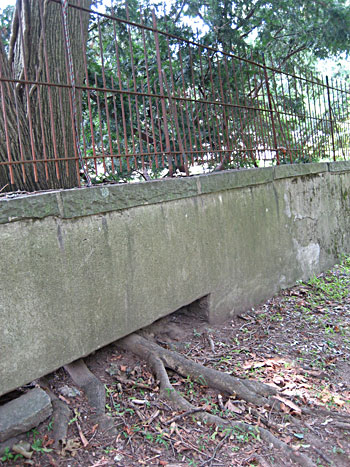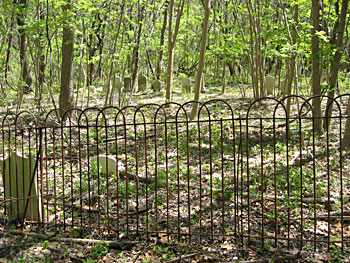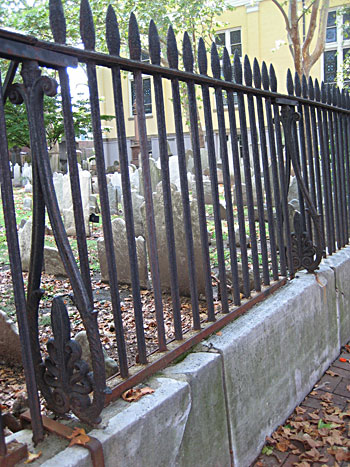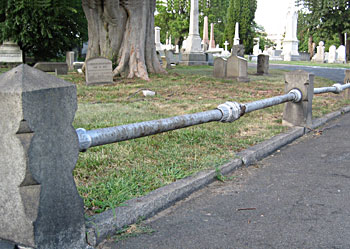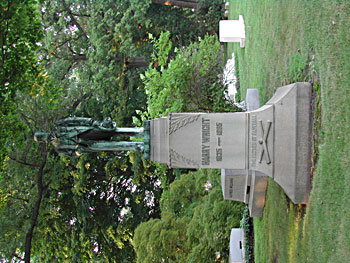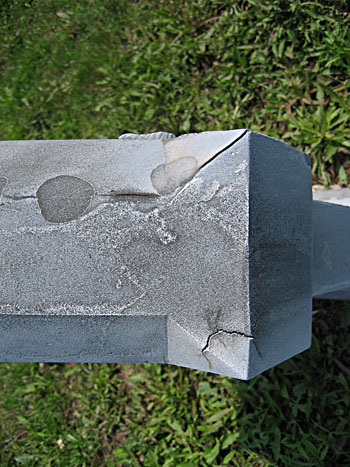Metal Types and Repairs
There are four principal types of metal that frequently occur in association with burial grounds and cemeteries:
- Wrought iron
- Cast iron
- Bronze
- Zinc
These metals are all used for varying purposes, deteriorate differently, and thus cause the need for multiple maintenance and repair techniques. Metal use ranges from monuments themselves to fencing, rails, doors, window guards, decorative details, hinges, door handles, locks, and clamps to hold stones together. All metal types and elements need to be evaluated individually for condition, cause of deterioration, and appropriate repairs.
Wrought iron and cast iron are most frequently found in association with fencing either at the perimeter of a cemetery or around a family cemetery plot. These metals can also be used for decorative doors and window bars on mausoleums and numerous other opportunities. Rust from oxidation will occur if the surfaces are not appropriately painted. Complete failure of fencing through rust happens when bolts and connectors fail or posts deteriorate at ground level. Galvanic reactions between the two metals can also occur and cause other deterioration problems if they are combined together. For lost or incomplete sections of fencing, contact a reputable iron worker for repairs or replacement.
Gas pipe railing held in place with decorative floral brackets between stone posts can be found surrounding many family burial plots in 19th-century cemeteries. The pipe and fixtures are normally painted with silver paint to look galvanized.
For a good understanding of the characterization, maintenance, and repair of cast iron, see the National Park Service, Technical Services Preservation Brief No. 27 The Maintenance and Care of Architectural Cast Iron.
Bronze as a metal for decorative cemetery monuments occurs infrequently, but they exist. Sculpture in bronze must be conserved as a fine art work and should be assessed and treated by a conservator. Cleaning may be appropriate, plus treatment with a standard butcher's wax to keep the metal from reoxidizing.
Recently, caste bronze has become popular in the form of flat markers for use in memorial gardens. These are employed also as standard Veterans' markers. Bronze markers arrive finished with a durable lacquered coating, but this too will age. In the future, these memorials may need polishing and a new waxing or lacquer coating.
Zinc served occasionally in the 19th century for cemetery memorials. The bluish gray metal looks like stone, but it corrodes very little. Memorial sections are cast and mounted together and sealed with molten zinc. The metal is brittle and can crack under pressure. Zinc can also sag, creep, or deform from its own weight. Zinc monuments standout in a row of stone monuments because they always retain crisp profiles and lettering.
| ||
| ||
| ||
| ||
| ||
| ||
|
